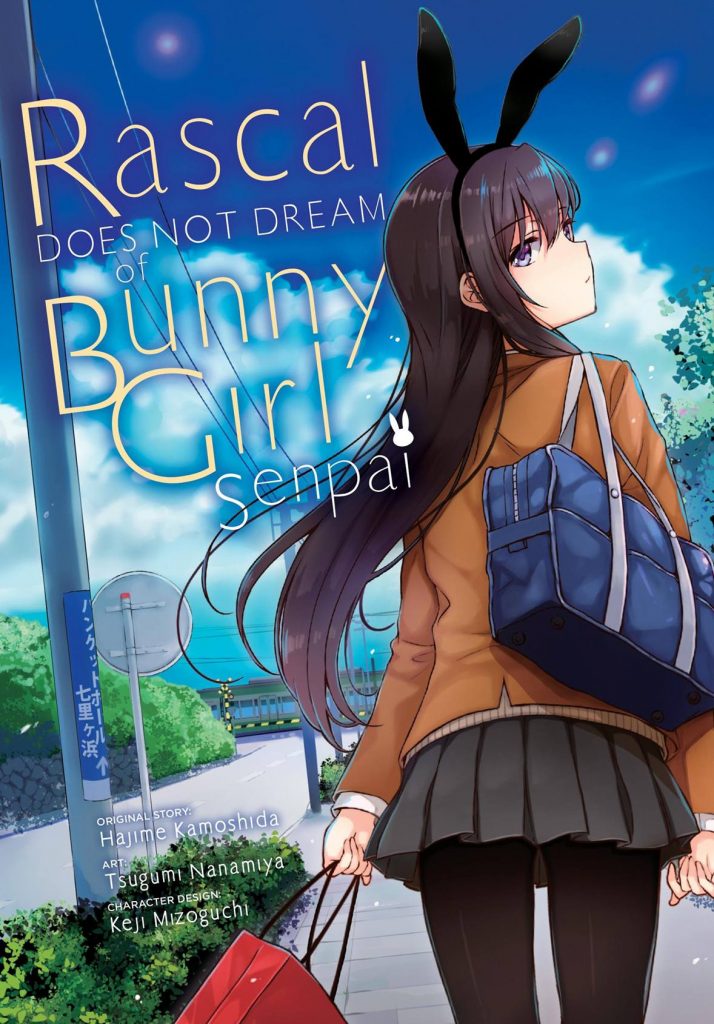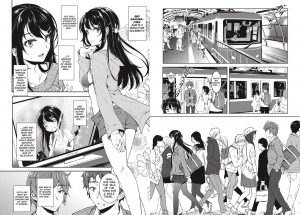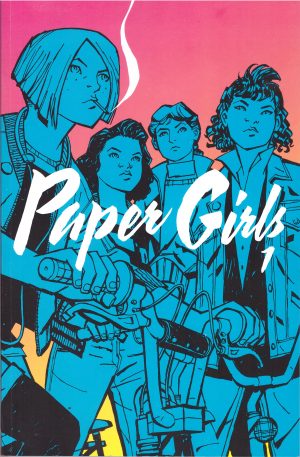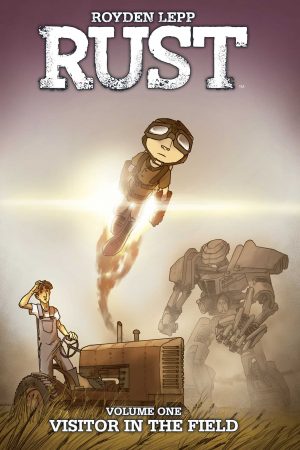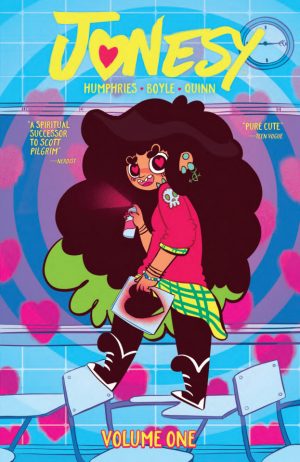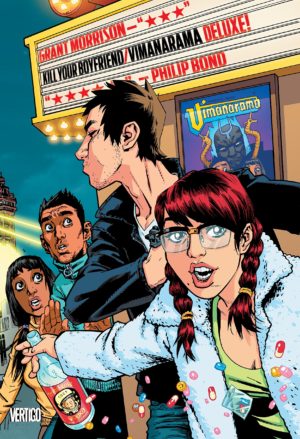Review by Ian Keogh
Hajime Kamosida’s Rascal Does Not Dream of Bunny Girl Senpei is an immensely successful series of novels for teenagers in Japan, prompting this manga adaptation by Tsugumi Nanamiya.
Sakuta Azusagawa and Mai Sakurajima make for an interesting pair. Sakuta’s been moved to a different school after an incident where three fellow pupils were hospitalised. There he meets Mai, a high school student known throughout Japan after a TV acting career that began when she was six. She’s used to being noticed, except all of a sudden no-one notices her anymore, except Sakuta when she was testing the principle out by walking through the library in a bunny girl outfit to see if anyone would recognise her. Having been noticed for years, she’s happy at the change, and annoyed that Sakuta is the exception able to see her.
What at first seems to be a typical wacky manga premise to be sustained by the familiar will they or won’t they? scenario then introduces some serious issues about school bullying leading to spontaneously appearing wounds. The introduction of other adolescent problems follows. The wounds have been diagnosed as “Adolesence Syndrome”, where intense feelings about something manifest as a form of wish fulfilment. In Mai’s case it’s positive, and no-one notices her, but Sakuta’s sister harbours self-doubt causing feelings about non-physical bullying to create the wounds. Sakuta himself has three slashes across his chest that he’s learned to live with.
As charming as much of Rascal is, all too often it slips into sexual innuendo and cheesecake posing. That’s as far as it goes, and there’s a feeling of either Nanamiya or the original novel almost using this as genre satire, as it can be clumsy and intrusive, and the exploitation of young actresses is convincingly addressed. The authenticity is maintained throughout, with some resonant insights into personality and motivation, everything beautifully rendered by Nanamiya’s delicate line.
Trivialities eventually give way to the more disturbing exploration of life’s practicalities when no-one can see you. It introduces a sadness and adds a depth to Mai and Sakuta’s friendship, and later ties in nicely with scientific theory that had seemed just passing colour when introduced. However, it also exemplifies why as a graphic novel at least, Rascal isn’t entirely successful. The overall pace is very slow, with little said between poses and glances, presumably intended as cinematic pauses. There are too many, and the added repetition slows things further. This frustrates in a 350 page collection, so the effect must have been magnified for Japanese readers over twenty serialised chapters.
As the ending approaches it seems as if Rascal is destined for a continuation, but a rapid conclusion is prompted by some insight, and exploiting that leads to a standalone experience. It’s been interesting, charming and fun, but could have been revised for a punchier graphic novel presentation.
